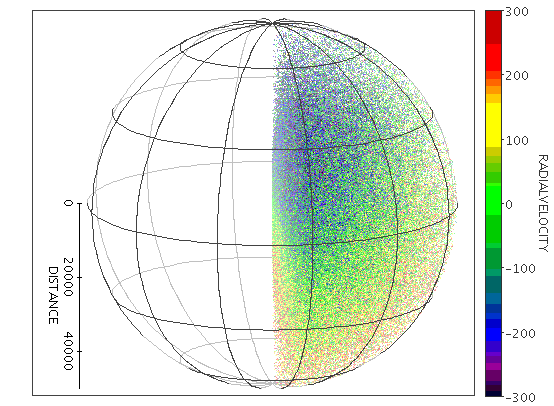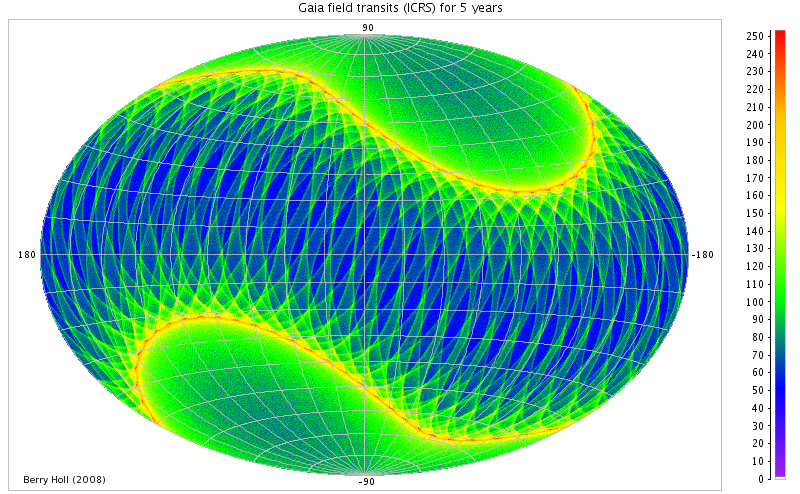Gaia Mission Science Objectives - Gaia
Science Objectives
|
Gaia measures the positions, distances, space motions and many physical characteristics of some one billion stars in our Galaxy and beyond. For many years, the state of the art in celestial cartography has been the Schmidt surveys of Palomar and ESO, and their digitized counterparts. Gaia provides the detailed 3D distributions and space motions of all these stars, complete to 20th magnitude. The measurement precision, reaching a few millionths of a second of arc, is unprecedented. This allows our Galaxy to be mapped, for the first time, in three dimensions. Some 10 million stars will be measured with a distance accuracy of better than 1 percent; some 100 million to better than 10 percent. Gaia's resulting scientific harvest is of almost inconceivable extent and implication. It will provide detailed information on stellar evolution and star formation in our Galaxy. It will clarify the origin and formation history of our Galaxy. The Gaia results will precisely identify relics of tidally-disrupted accretion debris, probe the distribution of dark matter and establish the luminosity function for pre-main sequence stars. They will also help to detect and categorize rapid evolutionary stellar phases, place unprecedented constraints on the age, internal structure and evolution of all stellar types, establish a rigorous distance scale framework throughout the Galaxy and beyond, and classify star formation and kinematical and dynamical behaviour within the Local Group of galaxies. Gaia will pinpoint exotic objects in colossal and almost unimaginable numbers: many thousands of extra-solar planets will be discovered (from both their astrometric wobble and from photometric transits) and their detailed orbits and masses determined; tens of thousands of brown dwarfs and white dwarfs will be identified; thousands of extragalactic supernovae will be discovered; Solar System studies will receive a massive impetus through the observation of hundreds of thousands of minor planets; near-Earth objects, inner Trojans and even new trans-Neptunian objects, including Plutinos, may be discovered. Gaia will follow the bending of star light by the Sun and major planets over the entire celestial sphere, and therefore directly observe the structure of space-time – the accuracy of its measurement of General Relativistic light bending may reveal the long-sought scalar correction to its tensor form. The PPN parameters γ and β, and the solar quadrupole moment J2, will be determined with unprecedented precision. All this, and more, through the accurate measurement of star positions. |



